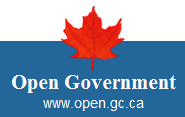Tony Clement, Canada’s Treasury Board President and the man in charge of introducing Open Government principles to the Government of Canada, is taking his talk where the online community is – on Twitter. On Thursday, December 15, he’ll be hosting moderated TweetChats in English and French as part of the government’s consultation about Open Government.

TweetChat: Where and When
The English TweetChat will run from 5:00 to 5:45 p.m on December 15. The hashtag for the English session is #opengovchat. Because it is a moderated discussion, the host account will be @TBS_Canada, not @tonyclementcpc. The Minister will be providing answers, but they will be typed by staff members.
A French language chat will be conducted an hour earlier, from 4:00 to 4:45 p.m. EST. The hashtag for the French session is #parlonsgouvert and discussion will be hosted by @SCT_Canada.
Canada’s Open Government initiative
Canada’s Open Government initiative consists of three elements:
- open data, making data available in machine readable formats
- open information, proactive disclosure about the work of government; and
- open dialogue, providing citizens with greater opportunity to have a voice in government decisions. Web 2.0 technologies will be used in this initiative.
The Canadian government has been making steady progress on this initiative throughout 2011. In March, then-Treasury Board Minister Stockwell Day announced a twelve-month pilot project with the launch of an Open Data portal. In June, the newly re-elected government reaffirmed its intent to proceed with Open Government. On September 19, Foreign Minister John Baird signalled Canada’s intent to join the International Open Government Partnership. On November 16, current Treasury Board President Tony Clement announced that completed access to information requests now will be posted online. Then, a big announcement on November 22: Tony Clement unveiled the Guideline for External Use of Web 2.0, the reference document that will be used by Canadian Public Servants in deciding whether they should or shouldn’t. On December 2, Clement announced the addition of 4,000 data sets to the Open Data Portal.
Now, it’s our turn to have our say
Finally, on December 6, Clement initiated a public consultation on Open Government. The consultation runs from December 6 to January 16. You can see the questions they government is asking and offer your input online. During the consultation, the government is posting what they’ve heard so far. And they have promised a final report in March 2012.
The Minister’s TweetChat this week also is part of the consultation process. I plan to participate. If you care about achieving a more open government, I hope you too will participate.
——————————–
Interested in diving deeper into gov 2.0 and open government?
Alex Howard writes about Defining Gov 2.0 and Open Government
Australian Senator Kate Lundy’s keynote address The Path to Open Government: The Pillars of Gov 2.0
Jesse Brown interviews Tony Clement about Open Government in Canada.




